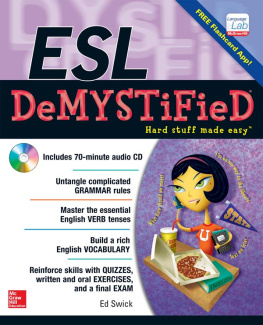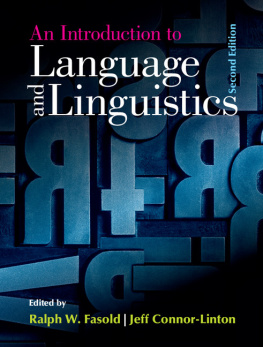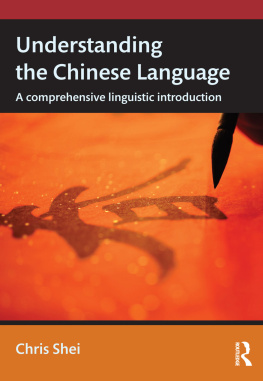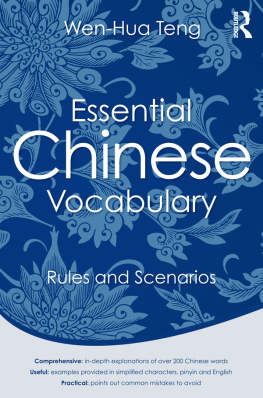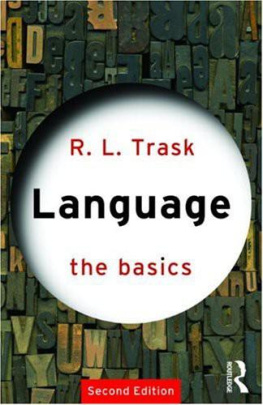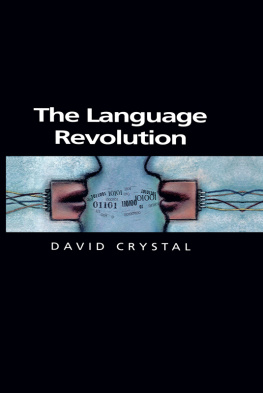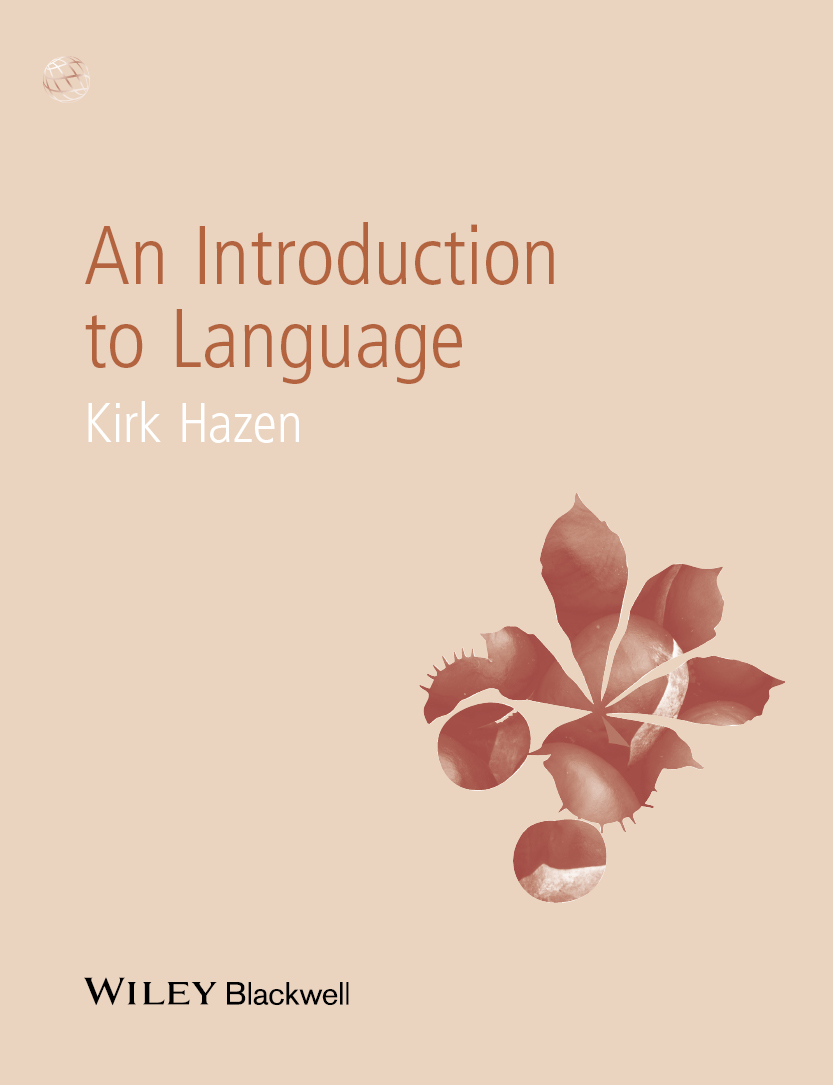
Linguistics in the World
Linguistics in the World is a textbook series focusing on the study of language in the real world, enriching students' understanding of how language works through a balance of theoretical insights and empirical findings. Presupposing no or only minimal background knowledge, each of these titles is intended to lay the foundation for students' future work, whether in language science, applied linguistics, language teaching, or speech sciences.
What Is Sociolinguistics?, by Gerard van Herk
The Sounds of Language, by Elizabeth Zsiga
Introducing Second Language Acquisition: Perspectives and Practices, by Kirsten M. Hummel
An Introduction to Language, by Kirk Hazen
This edition first published 2015
2015 John Wiley & Sons, Inc
Registered Office
John Wiley & Sons Ltd, The Atrium, Southern Gate, Chichester, West Sussex, PO19 8SQ, UK
Editorial Offices
350 Main Street, Malden, MA 02148-5020, USA
9600 Garsington Road, Oxford, OX4 2DQ, UK
The Atrium, Southern Gate, Chichester, West Sussex, PO19 8SQ, UK
For details of our global editorial offices, for customer services, and for information about how to apply for permission to reuse the copyright material in this book please see our website at www.wiley.com/wiley-blackwell.
The right of Kirk Hazen to be identified as the author of this work has been asserted in accordance with the UK Copyright, Designs and Patents Act 1988.
All rights reserved. No part of this publication may be reproduced, stored in a retrieval system, or transmitted, in any form or by any means, electronic, mechanical, photocopying, recording or otherwise, except as permitted by the UK Copyright, Designs and Patents Act 1988, without the prior permission of the publisher.
Wiley also publishes its books in a variety of electronic formats. Some content that appears in print may not be available in electronic books.
Designations used by companies to distinguish their products are often claimed as trademarks. All brand names and product names used in this book are trade names, service marks, trademarks or registered trademarks of their respective owners. The publisher is not associated with any product or vendor mentioned in this book.
Limit of Liability/Disclaimer of Warranty: While the publisher and author have used their best efforts in preparing this book, they make no representations or warranties with respect to the accuracy or completeness of the contents of this book and specifically disclaim any implied warranties of merchantability or fitness for a particular purpose. It is sold on the understanding that the publisher is not engaged in rendering professional services and neither the publisher nor the author shall be liable for damages arising herefrom. If professional advice or other expert assistance is required, the services of a competent professional should be sought.
Library of Congress Cataloging-in-Publication Data
Hazen, Kirk.
An introduction to language / Kirk Hazen. First Edition.
pages cm (Linguistics in the world)
Summary: An Introduction to Language helps shape readers' understanding of what language is, how it works, and why it is both elegantly complex and yet essential to who we are Provided by publisher.
Includes bibliographical references and index.
ISBN 978-0-470-65895-6 (hardback) ISBN 978-0-470-65896-3 (paper) 1. Linguistics. I. Title.
P121.H449 2014
410dc23
2014007435
A catalogue record for this book is available from the British Library.
Cover image: Close-up of conkers. @ Andrew Masters/IStockphoto
Cover design by Nicki Averill
For their willingness to tune me out, for their five-second attention spans, for their exasperation at my efforts to teach them all the same, and for their continued love no matter how aggravating I am, I dedicate this book to the three people who most challenged me to become a better teacher.
For Keegan, Coleman, and Madara
Companion Website
This text has a comprehensive companion website which features a number of useful resources for instructors and students alike.
For Instructors
Instructor's manual
Answer keys for the end of chapter exercises
For Students
Interactive sample quizzes
Flashcards of key concepts
Annotated web links and video clips
Visit http://quizlet.com/_puhix to access the flashcards, and www.wiley.com/go/hazen/introlanguage for all other materials
Acknowledgments
Writing a book is something like walking down a crowded city street. You might be doing the walking by yourself, but you are not alone. Your effort might be in your walking, but you did not build the sidewalk or the city around you. You might be walking to a certain spot, but there are lots of diversions that alter your path. As walks go, writing this book has been a good one.
My two Wiley Blackwell editors deserve many thanks. The person who started me off on this trip was Danielle Descoteaux, and I want to thank her for her persistence with me (she first asked in 2006, but I did not sign up until 2010): Her vision, voluminous knowledge of publishing, avalanche-like emails, and support throughout made this project possible. Julia Kirk, my other primary editor at Wiley Blackwell, was able to carry me through with patience and sage advice.
Locally at West Virginia University, I would like to thank the students I have taught in an introduction-to-language course, vaguely enough titled The English Language. I have had the good fortune to teach this course 30 times since 1998, and it is my experience from that class and those students that forms the foundation for this book. I still enjoy teaching this class, and it is the students who make it valuable and enjoyable.
The students who have helped me the most are those who have worked with the West Virginia Dialect Project. From the lab managers to the teaching assistants, we have had amazing folk, and I am immensely grateful to have worked with them. For assistance with this book, I would like to specifically thank the WVDP technical writers/copy editors/indexers: Isabelle Shepherd, Jaclyn Daugherty, Lily Holz; team MCQ: Margery Webb, Kiersten Woods, Emily Vandevender; and the teaching assistants who contributed to quizzes, glossary terms, and homework answers: Allison Eckman, Jordan Lovejoy, Emily Greene, Emily Justiss, Shannon Goudy, Caleb Stacey, Khali Blankenship, and M'lyn Gibson.
I would like to thank my mentor, Walt Wolfram, for marking so many trails for me to follow. I want to thank Patrick Conner for hiring me at WVU and working with me on the Old English examples at WVU. I thank Julia Davydova for helping me with Russian examples and discussions of language variation, and Jim Harms and Mary Ann Samyn for their assistance with poetry and genre. Janet Holmes taught me a great deal about producing a book while we edited Research Methods in Sociolinguistics, and this book benefited from that experience. I want to thank the Department of English and the Eberly College at WVU for providing me with so many opportunities and so much freedom to work.
The reviewers for this book were invaluable for its development. Their advice was clear and direct, and I incorporated it in every section. I thank them for their astute reading and precise comments.
I especially want to thank my family for their love and support. My parents, Barbara and Al Hazen, provided me with a wonderful childhood and set me on firm educational ground, entrenching in me the idea that parents are the first teachers. My mother-in-law, Janet Coleman, and my entire extended family have kindly brought me into their lives. Above all, I want to thank Kate Hazen for working with me for the last 24 years to build the beautiful life we have and loving me all the way through.
Next page
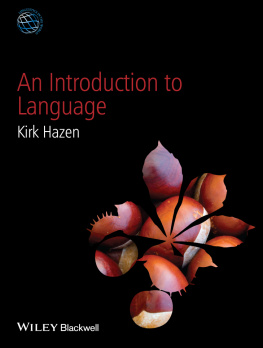
![Andrew Radford - Linguistics An Introduction [Second Edition]](/uploads/posts/book/882994/thumbs/andrew-radford-linguistics-an-introduction.jpg)

